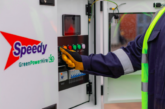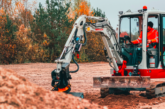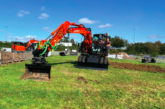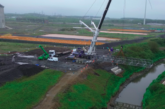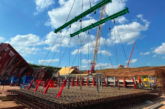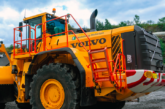
Jaime Vos, AEM Safety Materials Manager, explains why operator awareness – not tech – is the best means of accident prevention.
I’ve spent a significant portion of the days and weeks since I participated in AEM’s Product Safety and Compliance Seminar trying to wrap my mind around its many topics: building a product safety program, risk assessment, safety symbol comprehension and the psychology of safety, among others.
Despite having worked in equipment safety publications for three years now, I marvel at how much I still don’t know. However, one thing I have learned is that OEM product safety professionals are passionate about “getting it right.”
While there are many facets of product safety to consider, one I consistently hear about is the importance of designing in safety and designing out risks. For those risks that can’t be designed out, though, OEMs use shields, guards, alarms and warning symbols to protect operators from harm.
This leads me to the subject of technology…
Several articles I’ve read lately emphasize technology as being key to building safer machines. Advanced warnings systems use proximity detectors, while sensors and cameras deliver a safer future with smarter equipment. Maybe someday the equipment’s artificial intelligence could prevent all foreseeable accidents. But it leads me to wonder:
How much technology can be added before it begins to overwhelm the operator’s ability to respond?
Can an operator effectively maneuver his or her machine without sensory overload?
And if not, will operators ignore safety communications intended to alert him or her?
The Human Factor – The Discipline of Operator Safety Awareness
Workers often share their workspace with machines. Safety awareness, while always important, becomes paramount when the equipment begins moving large amounts of dirt or lifting heavy objects.
Operators should rely on their training, hand signals and certainly the equipment’s safety systems, but can they still suffer from sensory overload and distraction?
After all, equipment operators are human. They deal with physical and mental stress, fatigue and the pressure to meet deadlines. Even the best technology available will not eliminate those issues.
The key to ensuring safe operation of big equipment is an operator’s commitment to safety. Not only does he or she need adequate training, the operator needs to consistently participate in behavioral-based safety training programs, engage in toolbox talks and help cultivate a culture of safety awareness within his or her organization.
Recently, I’ve noticed several postings on social media that focus on changing people’s attitudes toward safety. Construction workers proudly display laminated photos of their families on their safety vests. One worker arrives on the jobsite wearing his daughter’s pink backpack as a reminder to start the day safe.
The message is strong: Going home safely to your loved ones should be everyone’s goal. However, that goal can only be achieved if workers make a concerted effort to commit to a safety program. It’s important to remember that, while product engineers work hard to design out hazards, the equipment operator’s safety awareness is the greatest protection against accidents.
AEM supports safety awareness year-round by offering an extensive array of safety products, including safety manuals and videos, with major equipment types covering aerial, agriculture, compact/portable, earthmoving, forestry, lifting, road paving and utility excavation applications.
To see the complete line of AEM safety materials visit safetymaterials.org

